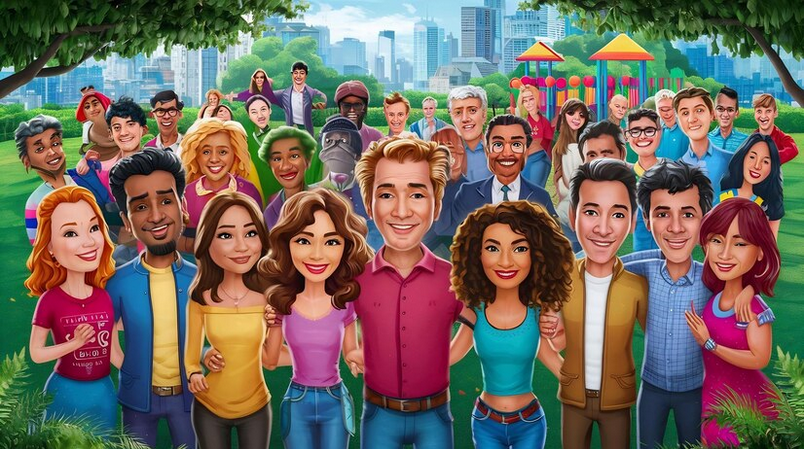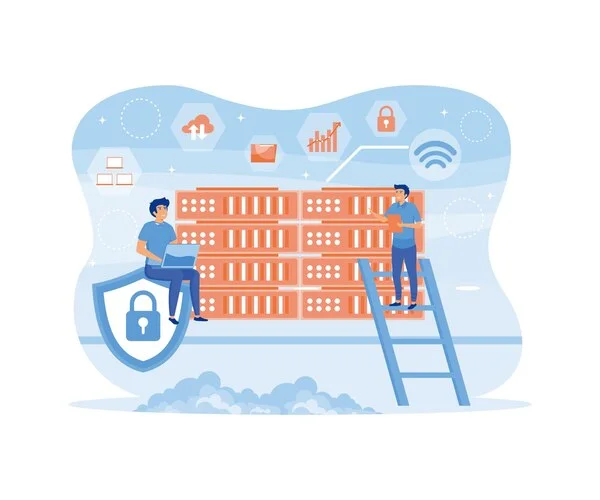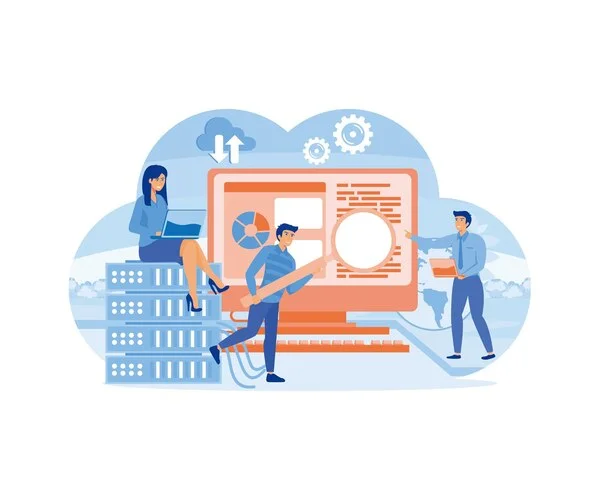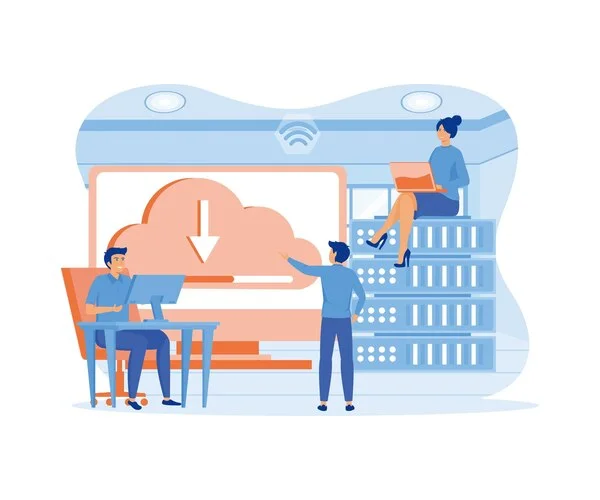Mass media today is experiencing a real revolution, changing our perception of the world. With every new click we open a window into unknown horizons, but what is behind this transformational process? Dive into the details as you explore how digitalization is impacting our society and what the future holds.

Glossary
📺 Mass media: General name for media information such as television channels, radio stations, print and online publications that inform society and shape public opinion.
🌐 Digitalization: The process of introducing digital technologies into various spheres of life, including the media, which leads to changes in the way information is disseminated.
📰 Printed media: Traditional media, such as newspapers and magazines distributed in paper format.
📡 Radio: The media that streams audio content including music, news and entertainment.
📺 Television: Visual media , which streams video content including shows, news and documentaries.
💻 Online editions: Digital versions of printed publications, as well as special news portals accessible via the Internet.
🏢 Corporate blogs: Blogs created by companies to communicate with clients and partners, provide news and up-to-date information about the company’s activities.
🌟 Brand Media: Content created in order to promote a certain brand, forming its image and attracting the target audience.
👥 Group blogs: Platforms on which Materials from several authors on various topics may be published to promote the exchange of views.
🎥 Video hosting: Platforms for downloading and viewing video content such as YouTube, where users can share videos and interact with each other.
💬 Online communities: Groups of people, United by common interests who communicate through online forums, social networks and other digital platforms.
🔍 Influence of mass media: Method, how the media influence public opinion, shape cultural norms and influence audience behavior.
Transformation of mass media in modern society
Mass media in the modern sense is not only print and electronic media, like the magazines or television channels we are used to. It's a vast world filled with a variety of platforms that are constantly changing and adapting. Once upon a time, looking through magazine covers at a kiosk, I thought: “It’s so interesting how many stories are hidden behind each page!” This simple question became the starting point for my exploration of the world of mass media.

I remember a few years ago I was lucky enough to spend time with the youth editorial team online magazine. We met every week, immersing ourselves in a sea of ideas and concepts. One day one of our authors, a bright and creative girl, presented an article about how social networks have changed the perception of public opinion. “Think about it,” she said, “it doesn’t matter how true the information is if it’s already gone viral!” This was a real discovery for us.
According to data, 80% of the content people read is now created by users themselves on platforms such as Telegram or Instagram. This confirms that the media are ceasing to be one-way conveyors of information and are turning into an active field for dialogue. For example, in the process of our communication with readers through comments, we began to notice how the tonality and subjectivity of perception of different topics was changing. In response to each of our posts, we received countless responses with completely opposite opinions.
While some of us sought truth and authenticity, others provoked sensations and scandals. I remember the time when we accidentally published unverified information about a significant event. I couldn’t forget those emotionally charged moments when the phone was ringing off the hook with messages: “You can’t be serious!” Realizing the seriousness of the situation, we immediately began working on a correction and apologized to our readers. It was a lesson that will be remembered for a long time. As one expert said, “Your mistakes and how you deal with them determine your authority.”
These cases only highlight the importance of first hand and open information. It's important to remember: we are not just news sources, we are the architects of public opinion. I see a lot of opportunities for the future: creating more transparent platforms that take into account the needs of the audience, an emphasis on truth and reliability of information.
With the spread of new technologies and further digitalization, the ability to interact with an audience will become not just desirable, but necessary. Every new trend, from blogs to instant messaging, creates a dynamic ecosystem where ideas can flow freely.

A step-by-step guide to building successful content
| Step | Description |
|---|---|
| 1 | Determine topic and target audience. |
| 2 | Research sources of information to confirm facts . |
| 3 | Create a content structure, including headings and subtopics. |
| 4 | Develop original ideas that attract attention. |
| 5 | Interact with your audience through comments and discussions . |
| 6 | Analyze results and tailor content based on reviews. |
Remember, this path is not the final one, but just the beginning of your wonderful journey into the world of mass media.
Basic functions of mass media
Remembering your first steps into the world of mass media, I feel excitement as if it were yesterday. At that time, it was important for me to understand the role of the media in society. Faced with amazing facts and stories, I gradually realized that mass media is not just a source of news, but a powerful tool for shaping public opinion and transforming social life.

The benefits of mass media can be illustrated by a striking example from my experience. While working on a project where it was necessary to cover an important social event, I organized interviews with residents of an area affected by flooding. I was amazed by their stories: people shared moments of despair when their homes flooded and hope for a fair consideration of their situation. Their voices, recorded in the report, not only informed the audience, but also supported an active movement towards solving their problems.
"The connection between the masses and the media is like a dialogue between an old friend and a new acquaintance. At first you are afraid, but soon you realize that you have a lot in common " - Elon Musk.
At the same time, she noted how important it was to create space for different points of view. Many program participants, in addition to talking about their troubles, expressed hope for the future and the active participation of local authorities. It is thanks to this approach that we were able to form a public opinion focused on support and understanding.
Let's not forget the statistics: according to recent surveys, 78% of people believe that the media play a key role in shaping public opinion. This is indicative of the perception of information that we receive daily. 🚀
Advantages of mass media:
- 📺 Information function: Mass media do not just inform society: they also set the tone for discussion of current topics. From television news to articles in online publications.
- 🎓 Educational Feature: Specialized programs and interactive webinars allow people to learn new things and develop their skills.
- 🎭 Entertainment Feature: From TV shows to memes, popular culture provides a break from routine and creates a common bond between different groups of people.
- 🗨️ Formation of public opinion: The value of opinions that are widely publicized through the media becomes invaluable.
Once I had to deal with a situation where information advertised in the media turned out to be a kind of “scandal”. One day the news sounded the alarm about the abandonment of municipal projects. However, interviews with local residents who have been actively fighting for years to improve their living conditions intensified the discussion. Their stories became available to me, full of pride and struggle. Isn't it true that such moments can kindle a fire in the hearts of the audience?
Ultimately, it was obvious that the media could influence the thinking of society by reporting events. Yes, there are also black pages when unscrupulous journalists manipulate facts. But real professionals find this an opportunity for growth, showing the real picture. 🌍
Sharing stories like these goes beyond just developing society. This is inspiring! So, which of you is ready to become the voice of your thoughts in this difficult and exciting area? 🔍

Steps to understanding the functions of mass media
| Step | Description |
|---|---|
| 1 | Research which streaming platforms and media are most effective for your topic. |
| 2 | Conduct quality interviews with event participants - it will give a unique perspective. |
| 3 | Explore analytics to understand how different audiences perceive information. |
| 4 | Share created content, discuss it with community - it is important to have feedback. |
Perhaps interaction with the media will open your eyes to promising prospects that , as I learned, seem to be loyal only to active participants.
Print and online
Print, such as newspapers and magazines, have been the mainstay of mass media for many years. When I remember my first paper magazine, which I held in my hands, a feeling of warmth and nostalgia arises. Every morning, holding a cup of coffee, I eagerly awaited the next issues. It was not just receiving information - it was a whole ritual.

Instead, online publishing has opened up entirely new possibilities for us. On the one hand, they provided instant access to news and articles, on the other hand, they did not allow the desire to read and research to fade. For example, the latest issue of the electronic publication "Sostav" covered not only news, but also in-depth marketing analytics, which undoubtedly attracted my attention.
Today, print media are trying to compete with online resources by creating their own digital versions. This, in turn, helps increase reach and attract attention to their content. I agree with the opinion of experts: “When you combine traditions and the latest technologies, success is inevitable.”
However, I faced a challenge: how to convey interesting content to the reader and satisfy his thirst for novelty? And then an idea came: to integrate reader reviews into electronic publications to make them more interactive. Thus, each issue became not only information, but also a place of discussion where readers could share their opinions and gain recognition.
Main stages of implementing interactive content:
- Conducting surveys among readers. 🗳️
- Integration of resources for comments and reviews. 💬
- Regular publication of articles based on audience requests. 📊
Radio as an important source of information
Imagine a morning when dew has just fallen and fresh air fills your lungs. At such moments, it is the radio turned on in the background that creates an atmosphere of closeness to the world. That's why radio stations will always remain a source of information that interests me.

Over the years, radio stations began to offer more than just music or news . They have become multi-format, broadcasting through different channels - telephones, computers, televisions. I remember one day I came across a live broadcast from the studio - it was so exciting!
Statistics show that radio broadcasts are ahead of print media in the speed of dissemination of information. Waiting for news was a pain when journalists had to finish their stories and radio stations could report important events in a matter of minutes. “We try to stay on the pulse of the times,” the presenters said, and this determined their uniqueness.
Radio has become not just a source of information, but also a place for discussing current issues. For example, on Avtoradio I heard about the idea of holding live events where listeners could practice their communication skills. This was truly inspiring!
How radio has adapted to modern realities:
- Launch of online streams. 📻
- Introduction of interactive programs with questions from listeners. ❓
- Using social networks to attract an audience. 🌐
Television: a reflection of society
When I think of television, I immediately think of screens, filled with numerous channels: from news programs to a selection of entertainment content. It is like an infinitely large mirror reflecting the reality of our society. Each TV channel has become a place for discussing critical issues.

Television has its advantages - fast information and a huge audience. My favorite current affairs program provided many facts about the socio-political situation. However, more and more people have become interested not only in news, but also in understanding the world through entertainment programs.
That's when another idea appears on the horizon: creating content that combines facts and entertainment. Thus, popular shows using elements of journalism began to attract a diverse audience.
Examples of how television changed its format:
- Interactive shows with the ability to poll viewers in real time. 📺
- Combining news with entertainment programs. 🎉
- Creation of educational programs with elements of life stories. 📘
Corporate Blogs: An Ongoing Dialogue
When I first came across corporate blogs, this seemed to me something unusual. On the one hand, here you could get information about the company, on the other hand, it was a unique way of communicating with clients.
Corporate blogs provide a platform for discussing current topics. They allow companies to communicate their values, share relevant news and demonstrate their expertise. For example, on the blog of a well-known company, I read about their new sustainability initiative. This made a strong impression on me.
Statistics confirm that blogs written by competent specialists help increase brand trust by 60%. People become more loyal when they see that companies are open to dialogue. I would say that such communication has become one of the key factors for success on the Internet.
How to competently conduct corporate blogs:
- Regular publications on topics of interest to the audience. 📝
- Answers to questions and comments from active readers. 💬
- Information about the company's social projects. 🌍
Brand media: Approach to the audience
When I heard about the concept of brand- media, there was a feeling that the media world had taken on a new form. This is more than just advertising - it is a story about the life, interests and hobbies of the target audience, which in turn creates trust.

The main question that all leading brand media are trying to answer: “What interesting to our audience?" One day, while reading a magazine, I noticed that they publish not only materials about money, but also about travel and business. This expanded their audience.
My observations show that successful brands become media platforms by creating value for their audience and connecting them to their own interests. “We strive to be not just a financial expert, but your life partner,” sounds like a real formula for success.
Key elements of successful brand media:
- A variety of topics and materials for a wide audience. 🌈
- Guest posts from experts and interesting personalities. ✍️
- Using interactive formats: surveys and competitions. 🎁
Group Blogs: A Place for Everyone
I love the concept of group blogs. It's a place for noteworthy authors, entrepreneurs, and experts to share their views. One major project I'm signed up for allowed various individuals to join forces to create first-person content about a business.
Each author has their own unique point of view and style. This creates an atmosphere of diversity and openness. For example, Habr has become a platform for discussing technological innovations, where authors from different parts of the world share their experiences.

As I have noticed, group blogs facilitate the exchange of opinions, which can lead to discussions and new ideas. This is an amazing opportunity for young professionals to grow and learn from the older generation.
Approaches to successful group blogging:
- Attracting writers with a variety of topics and styles. 🖊️
- Creating a space for exchange of opinions and discussions. 🔄
- Regularity of publications and announcements of future events. 📅
Online communities: Platforms for interaction
When I plunged into the world of the Internet communities, it became clear how loud their voice could be. Social networks and instant messengers such as Telegram have become the main platforms for exchanging news and opinions. They create a unique dynamic where everyone can speak up and be heard.

Initially, it was difficult to imagine how modern businesses could adapt to this speed of information. But watching many companies integrate their channels with advertising, it became clear that this is exactly what is needed.
So, one of the popular Telegram channels that I learned about has a blog about marketing, where strategies and trends are discussed. Reading his articles and participating in discussions allowed me to expand my knowledge.
Ways to use online communities:
- Participation in groups and channels based on interests and specialties . 📌
- Creating your own public pages to discuss current topics. 📢
- Using video and visual formats to attract audiences. 🎥
The influence of mass media on public consciousness
How many times have I heard the phrase “everything we read is just media manipulation”? I often wondered: is this really so and how do mass media shape our perception of reality? In one of my projects aimed at researching media trends, I came across an incredible example that clarified a lot.

Imagine: in the small town where I grew up, local television decided to make a story about a business that was recovering after the crisis. They chose one of the coffee shops, which, according to the owner, was going through difficult times. The program aired and as soon as the story caught the attention of the audience, the coffee shop became the center of attention. As a result, in just a week, the number of clients doubled. How did this happen? Of course, this was not just a case of luck. As I later learned, by producing information content, the media created a completely new social reality, initiating interest in this business.
From my observations, it was obvious that some companies were able to create their own unique story by skillfully using the power of mass media. For example, this approach was strongly visible in the cultural campaign regarding the support of local wines and breweries. As a result, new consumer trends have emerged, making small businesses successful without huge advertising budgets.
As early as 2018, according to a national study, 75% of respondents said they base their purchasing decisions on media content. How can we, media specialists, use this knowledge? Participation in analytical projects and media campaigns related to current problems of society allows not only to increase public attention to necessary issues, but also to change the perception of reality.
As a practical tip, if you are planning to launch a PR campaign, it is important to ask yourself a few questions:
- How can you create an emotional connection with your audience?
- Which customer stories are most impressive and could become the basis for a story?
- How can you use social media to increase your reach?
Working with mass media is essentially creating networks that connect people, ideas and businesses. Don't forget: every story, no matter how simple, can have a significant impact if told correctly. As I always say, “the truth is in the details.”
Bottom line, if your messages resonate with your audience, you have a chance of not just boosting sales, but also inspiring people to change.
Example of effective use of mass media
| Step | Description |
|---|---|
| Identify your target audience | Research what problems and interests your audience has. |
| Create intriguing content | Write stories that will worry people. |
| Support feedback | Be open to interaction with audience through social networks. |
| Analyze the results | Learn what information worked best everything and why. |

Frequently asked questions on the topic: Mass media
What is mass media?
Mass media are mass media that disseminate information and content to a wide audience through various channels. These include television and radio programs, print publications, online resources and social networks.
What is the influence of mass media on society?
Mass media shape public opinion, influence people's behavior and contribute to the dissemination of information. They also play an important role in education and access to knowledge.
What types of mass media are there?
There are different types of mass media: print publications (newspapers, magazines), radio, television, online publications , blogs, brand media and video hosting.
Why do we need mass media?
Mass media is necessary to inform the population, ensure transparency of government, represent different points of view and promote civic participation in life society.
How has the role of mass media changed in the era of digitalization?
In the era of digitalization, mass media have become more accessible, their role has changed from informing to interaction and creation of content by users. Online platforms provide instant access to information.
What are some examples of online publications?
Examples of online publications include news sites, blogs, niche portals, and user-generated content platforms such as Medium and Tumblr.
What is the impact of social networks on mass media?
Social networks increase the influence of mass media by allowing users to share information, use different content formats and actively participate in discussions .
What is brand media?
Brand media is information and content that is created by companies to promote their image, products or services through various mass media channels.
How do mass media influence the perception of information?
Mass media form the context in which information is perceived. They can focus attention on certain aspects of events, which influences the subjective opinion of the audience.
Thank you for your attention and for becoming more experienced! 🌟
Mass media is a powerful tool that has changed our society forever. Today, understanding their impact and transformation in the era of digitalization is not just knowledge, but the key to your success. I shared not only research, but also personal examples of how new media shape public opinion and business. Our ability to adapt to these changes determines the future. Share your thoughts in the comments! Your opinion is valuable to me. 🚀

Article Target
To inform and increase interest in the topic of mass media
Target audience
Journalists, students, researchers, media enthusiasts
Hashtags
Save a link to this article
Zinaida Rumyantseva
Copywriter ElbuzIn the world of automation, I am the weaver of the story of your prosperity. Here, every sentence is a drop of a catalyst for success, and I am ready to guide you along the path of an effective Internet business!
Discussion of the topic – Mass media
Disclosure of the topic of mass media, impact on society, transformations in the era of digitalization and development prospects.
Latest comments
12 comments
Write a comment
Your email address will not be published. Required fields are checked *

























Зинаида Румянцева
Mass media is undergoing amazing transformations! It is necessary to consider how social networks have changed the perception of information. Which platform do you think is the most influential in today's world? 📱
Oliver Smith
I agree, Zinaida! I would add that TikTok has become an important tool for young people. This affects the culture of information consumption. Interestingly, many are now seeking worldview through short videos. 🎥
Anna Müller
Exactly, Oliver! I also noticed that some people like to receive information in podcast format. It really changes the way people perceive and discuss news. 🎧
Léa Dupont
Absolutely right, Anna! I love podcasts myself. They allow me to combine information with daily activities. What podcast do you think was your discovery? 🤔
Carlos García
Lea, I like 'Radio Tochka'. Current topics are discussed there, and there are many interesting interviews. Do you think this helps create a more open society? 🌍
Katarzyna Nowak
Great that you brought up openness, Carlos! Mass media play an important role in shaping public opinion. In addition, the availability of information allows more people to participate in the dialogue. 💬
Wojciech Kowalski
I agree with you, but it is worth remembering that sometimes information can be distorted. You need to be able to filter content. Unfortunately, there is a lot of fake news. 🤨
Georgiy Ivanov
That's it, Wojciech! All these new trends are boring and stupid. I prefer classic media, where everything is verified, rather than this stream of information noise. No depth! 😒
Зинаида Румянцева
George, I understand your point, but often newer formats allow information to be presented in an interactive and interesting way. Maybe it's worth a try? 🌟
Marta Kowalczyk
Zinaida, this is really important! For example, it was through TikTok that I discovered many new facts about social issues. People often don't think about problems until they see them in a format that is familiar to them. 📊
Oliver Smith
Exactly, Martha! It seems to me that the mass of information makes us more aware and sensitive to our surroundings. There is power in this! 💪
Katarzyna Nowak
I agree, Oliver! The main thing is to be able to manage this information. Education and critical thinking must become our habits. 🌱